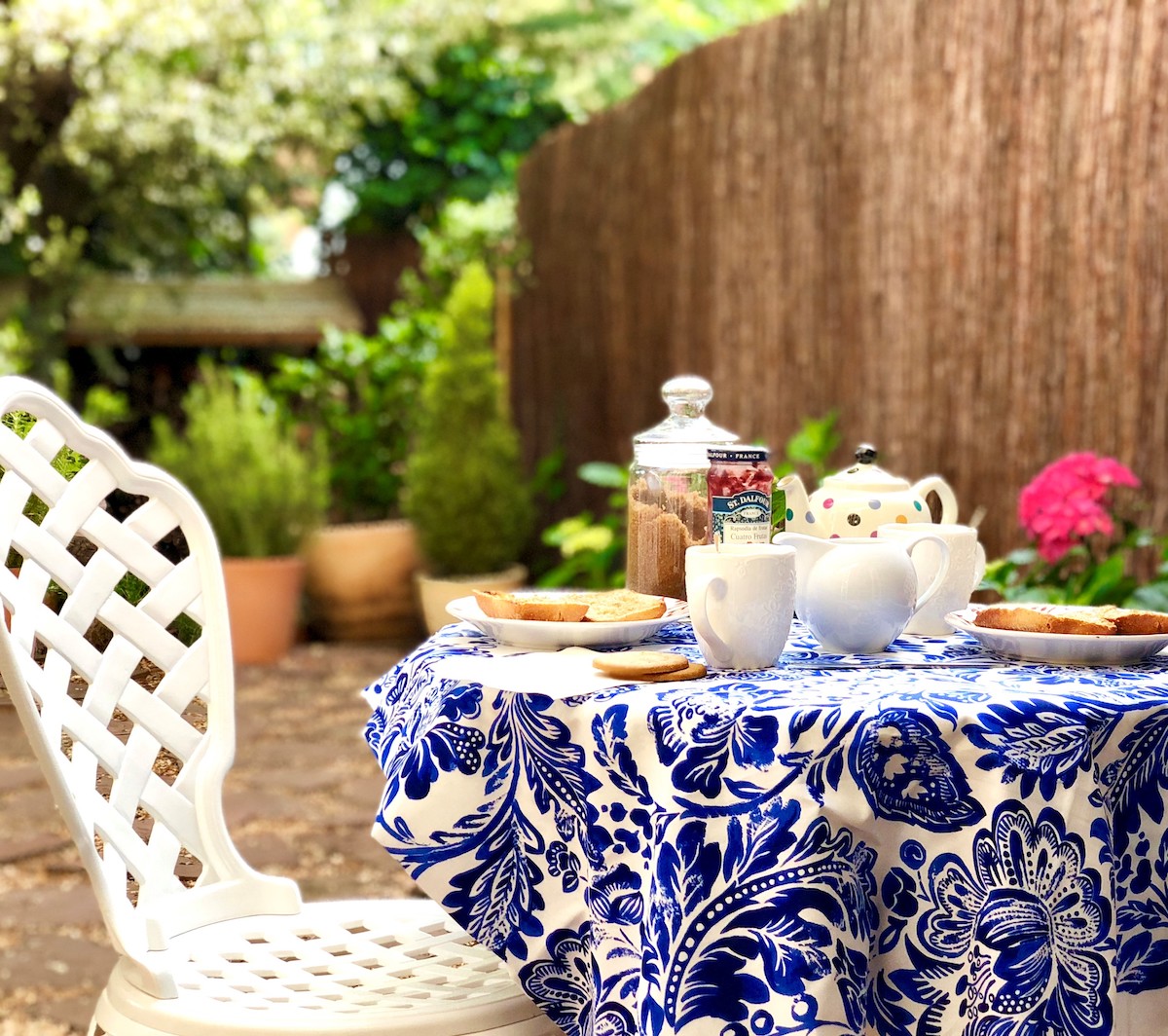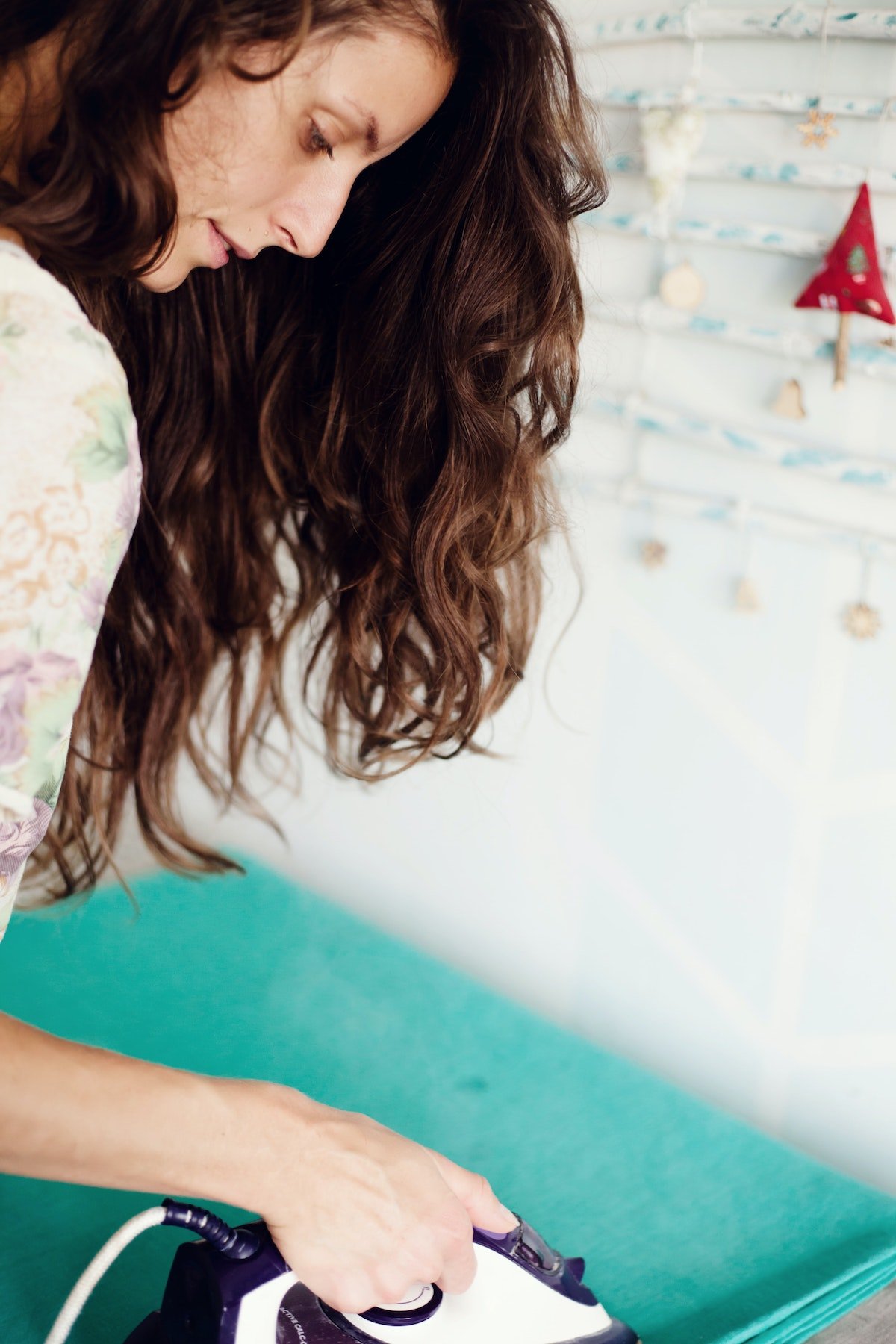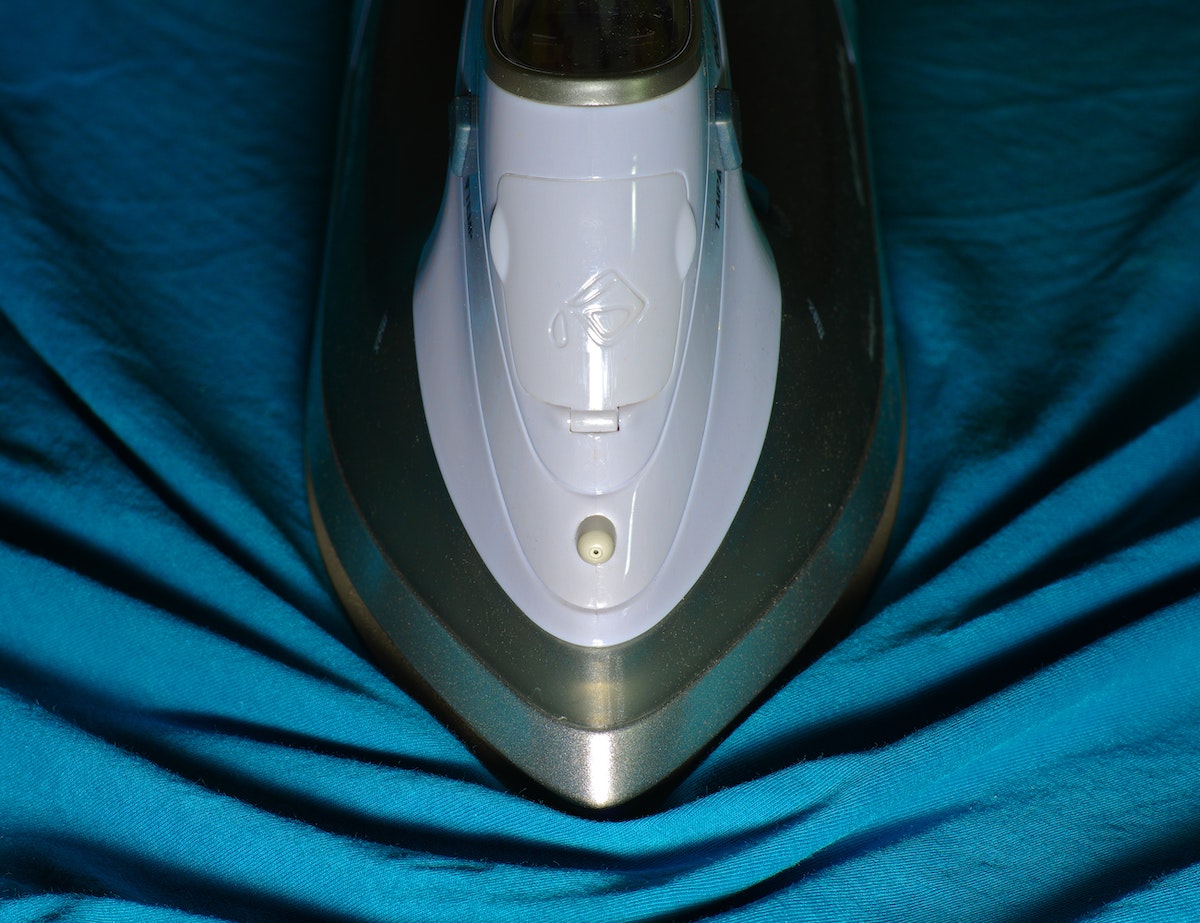Just before Christmas, we published our how to make a tablecloth for a garden table article. In that, we went into detail about how to measure and cut the fabric, pin the hem and finish with a sewing machine. However, that article is proving to be quite the popular read but it did raise a valid question here at Lazy Susan HQ; “what if you can’t sew?”.
Fair point. A sewing machine is a tricky one to master. Myself, I was lucky to receive lessons at school, and I enjoy making my own clothes in my spare time. If you can’t sew though, is there an alternative DIY option?
Of course, you can order bespoke tablecloths and get them made to fit perfectly or make do with a rectangular cover on an oval table, for example. But can you your own tablecloth for a garden table without sewing?

Well, that is something we want to share in this article, so please read on as we have a few great solutions that are cost-effective, stylish and super easy to do.
How to make a garden tablecloth without sewing
We have come across a number of solutions over the years and all of them are essentially designed to stop the fabric from fraying once cut to size and shape
What we’ve focussed on in this article is the methods that are easy, provide a clean finish/edge and are safe to do at home. We have excluded things like using nail polish or burning the edge of synthetic fabrics for example as they don’t meet those criteria.
So in no particular order, these are Lazy Susan’s best ways to make a tablecloth for our metal garden tables without a straight, cross, zig-zag, slant or triple stretch stitch in sight:
1. Cut only garden tablecloth

One of the simplest ways to make a tablecloth for a garden table without sewing is to purchase a non-woven fabric that won’t fray when cut.
When it comes to non-woven fabrics for outdoor use, you have a few options that can be cut without the need to add an edge seam.
And probably one of the best fabrics for DIY garden tablecloths is a lightweight oilcloth as they are easy to work with, easy to cut and available in a wide range of garden-friendly prints and colours.
Made by taking printed cotton fabrics which are then coated with a hot melted vinyl plastic (PVC) in order to seal the fabric, the end result is a fabric that has a soft table-friendly feel, is waterproof and wipe-clean, and the cotton threads are fixed in place so it will not fray.
Only Oilcloths have a great range, such as the Reno Multi-Matt Oilcloth Tablecloth (pictured above), if you wanted to go down this route.
2. Iron-on hem tape garden tablecloth

Mums and dads will know what a lifesaver iron-on hem tape is when getting towards the end of the school year.
You want to hold off buying new until the summer but the stitching on skirts and trouser hems is always the first to go - Hem or webbing tape is the solution!
However, it is also a great way to add a hem to a woven fabric to make a quick and simple tablecloth and prevent it from fraying.
You get a nice crisp edge too with minimal puckering so it works great on lightweight linen and cotton.
You basically iron in the hem you want using a damp tea towel and iron set to mid-heat, place the webbing such as Hemline's Insta-Bond Tape (above) in the seam, press again with the tea towel and iron, and leave it to cool.
3. Frayed edge garden tablecloth

Another great option is to not fight the fray. Embrace it and make a feature out of it.
The video below from Sewway shows you how to fray fabric edges:
Whilst the video below from Just Get it Done Quilts has 10 great tips for keeping your fraying even and under control:
If you want a detailed step-by-step guide then we would recommend Alyssa & Carla’s DIY No Sew Tablecloth method. They use a beautiful flannel fabric and whilst it was for indoor use, it would look just at home outside on the patio.
4. Fabric glue garden tablecloth

Much like the webbing/hem tape, you can also use a textile or fabric glue to create a hem that looks just like a sewn one.
No need for pinning or sewing, they are great for holding a hem in place on a garden tablecloth and, it is quick and easy to apply.
There are a number of products on the market, and most of the leading brands sell textile glue. We’ve tried a number of them over the years but Sew No More Fabric Glue from Coopers of Stortford (below) would get our recommendation.
It is simple to apply, you get a good minute or so before it goes tacky, and once it does, it will hold the hem firmly in place and dry to a clean clear finish.
Our advice is to iron a 3 to 4-cm hem in place with an iron and a damp tea towel, when dry, apply a thin line of glue to both sides of the hem.
Leave until tacky and then on a large flat surface fold together and press with an iron and a dry tea towel. Before you tackle this project, Sewing Parts has this great how-to video:
5. Iron-on vinyl garden tablecloth

Much the like the earlier oilcloth solution, if you have a woven fabric you want to use or an old indoor tablecloth you want to weatherproof, then this is the craft project for you.
You can take that fabric and create your own oilcloth by ironing on a heat transfer vinyl such as Lamifix.
It can be tricky on a large tablecloth but the finished results are worth it.
You simply place the sheet of Lamifix (which is available in a number of finishes such as gloss and matte) over your fabric, lay a tea towel over the top and lightly iron on a mid-heat setting.
We found it best to start ironing in the middle and work your way out as this will push any air bubbles out to the edge. Just keep lifting the tea towel to check as you go.
In the video below, Andrea Marie Chapman shows you how to laminate fabrics with Lamifix’s clear vinyl
6. Pinking shears garden tablecloth
Pinking shears such as the Mundial Industrial’s from MacCulloch & Wallis (pictured above) are another great way to get a neat no-fray edge on fabric.
Using pinking sheers to cut a zig-zag edge on your tablecloth is a great short-term solution if you say need a one-off tablecloth for a themed party.
The magic is in the v-shaped cut with shorter threads at the tip and longer as you move in, and it is this combination that will lock the fabric in place and minimise fraying.
Well sort of. They do hold pretty up well but you do tend to find that most fabrics will eventually start to fray after a couple of washes.
The pinking method is also a great way to finish non-woven fabrics such as oilcloths as it is an easy way to cut a nice stylish edge.
If you have any photos of your new Lazy Susan Garden Table dressed with your DIY tablecloth, then we’d love to see a few snaps for our Do Some Good charity campaign. You can tag us @LazySusanFurniture on Instagram or Facebook or email them to us at sales@lazysusanfurniture.co.uk.










